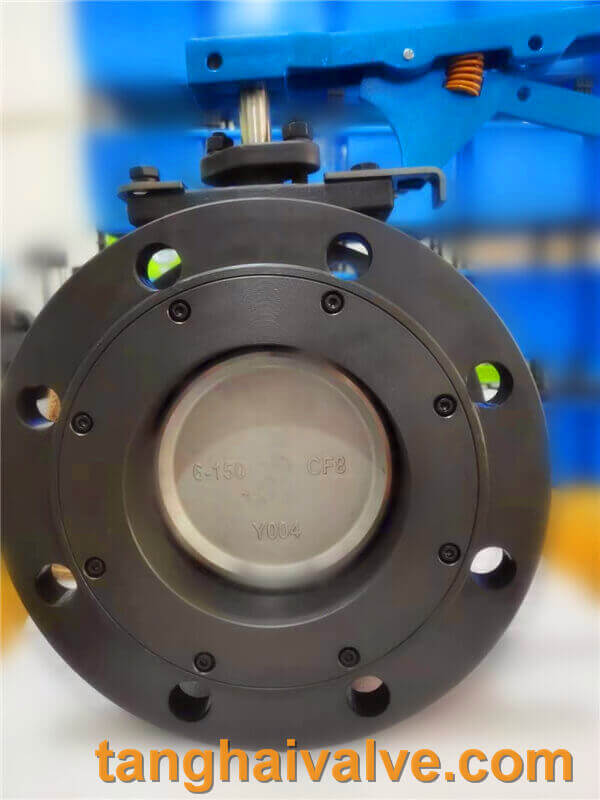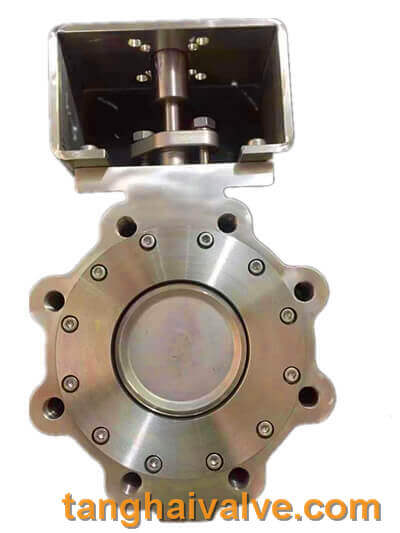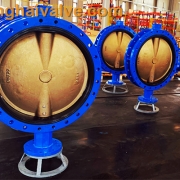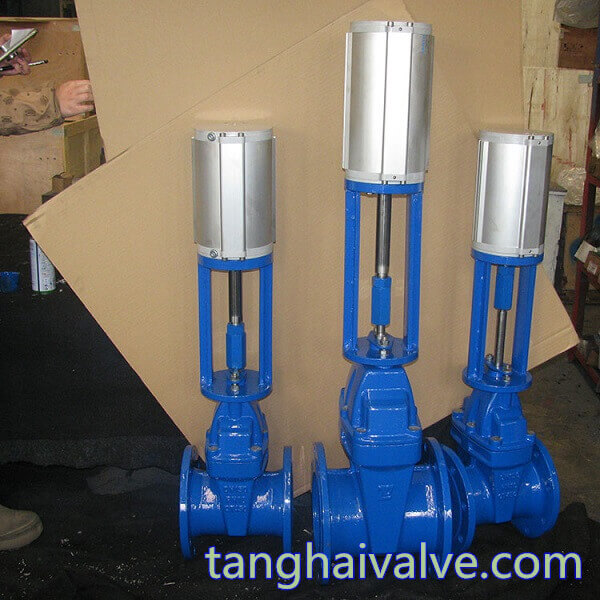Butterfly valve structure principle and application analysis
Butterfly valve (also called flap valve) is a kind of regulating valve whose closing part is circular disc or disc, mainly composed of valve body, valve stem, disc and sealing ring. The valve body is cylindrical with short axial length and built-in butterfly plate. The butterfly plate of the butterfly valve is installed in the diameter direction of the pipeline. In the cylindrical passage of the butterfly valve body, the disc-shaped butterfly plate rotates around the axis, and the rotation angle is between 0° and 90°. When the rotation reaches 90°, the valve is fully opened.

Double offset-flanged butterfly valve-D42F-150lbC (1)
The butterfly valve is simple in structure, small in size and light in weight, and consists of only a few parts. Moreover, it can be opened and closed quickly by rotating 90°, and the operation is simple. At the same time, the valve has good fluid control characteristics. When the butterfly valve is in the fully open position, the thickness of the butterfly plate is the only resistance when the medium flows through the valve body, so the pressure drop generated by the valve is small, so it has better flow control characteristics. The butterfly valve has two sealing types: elastic seal and metal seal. Elastic sealing valve, the sealing ring can be inlaid on the valve body or attached to the periphery of the butterfly plate.
Butterfly valves with metal seals generally have a longer life than those with elastic seals, but it is difficult to achieve a complete seal. The metal sealing butterfly valve can adapt to higher working temperature, while the elastic sealing butterfly valve has the defect of being limited by temperature.
If the butterfly valve is required to be used as a flow control, the main thing is to correctly select the size and type of the valve. The structure principle of butterfly valve is especially suitable for making large-diameter valves. Butterfly valves are not only widely used in general industries such as petroleum, gas, chemical, and water treatment, but also used in cooling water systems of thermal power stations.

Double eccentric-lug butterfly valve-D72F-150lbP-stainless steel (4)
Commonly used butterfly valves include wafer type butterfly valves and flange type butterfly valves. Wafer type butterfly valve uses double-head bolts to connect the valve between two pipe flanges. Flange type butterfly valve has flanges on the valve, and bolts are used to connect the flanges at both ends of the valve to the pipe flanges.
TH Valve is a professional manufacturer of butterfly valve, gate valve, check valve, globe valve, knife gate valve, ball valve with API, JIS, DIN standard, used in Oil, Gas, Marine industry, Water supply and drainage, fire fighting, shipbuilding, water treatment and other systems, with Nominal Diameter of DN50 to DN1200, NBR/EPDM/VITON, Certificates & Approvals: DNV-GL, Lloyds, DNV, BV, API, ABS, CCS. Standards: EN 593, API609, API6D
Related news /products:
What is a wafer type butterfly valve;
The working principle of butterfly valve (picture);
What is the material of the main parts of the butterfly valve?-(2);
Notes on selection and installation of butterfly valve;

 tanghaivalve.com
tanghaivalve.com

 © Copyright 2020 Tianjin Tanghaidongyang Valve Co., Ltd. All Rights Reserved.
© Copyright 2020 Tianjin Tanghaidongyang Valve Co., Ltd. All Rights Reserved. tanghaivalve.com
tanghaivalve.com